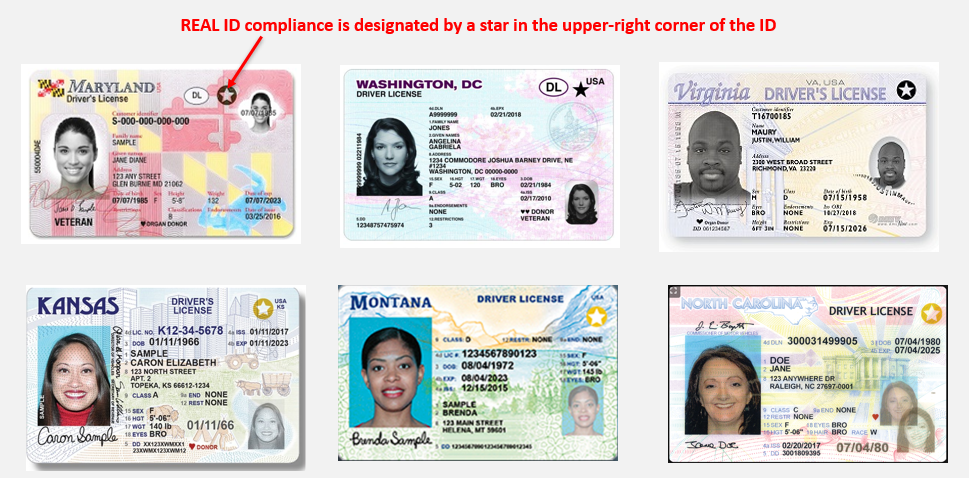Beginning October 1, 2021, the National Institutes of Health (NIH) will no longer accept identification that fails to meet the minimum requirements and issuance standards for federal recognition per the REAL ID Act of 2005. As of the publication of this article on February 22, the REAL ID enforcement at NIH is 220 days away.
The REAL ID Act of 2005 established minimum security standards for state-issued driver's licenses and identification cards and prohibits federal agencies, such as NIH, from accepting for official purposes licenses and identification cards that do not meet these standards as of October 1, 2021. For additional information about the Real ID Act, please visit: https://www.dhs.gov/real-id.
Approved Forms of ID Required to Enter NIH Facilities on October 1, 2021:
- REAL ID Driver's License or State Identification Card
- Enhanced Driver's License from Michigan, Minnesota, New York, Vermont or Washington
- Passport or Passport Card
- HSPD-12 PIV or CAC Card
- Permanent Resident Card
- Federally Recognized, Tribal-Issued Photo ID
- Canadian Provincial Driver's License or Indian and Northern Affairs Canada Card
- USCIS Employment Authorization Card (I-766)
- Other Less Common Documents (e.g. Merchant Mariner Credential)
Can I still use my badge to get on campus?
YES. The ID badges issued by NIH are still approved for accessing the campus. This includes the HHS ID Badge (PIV Card), the Restricted Local Access (RLA) Badge and the NIH Extended Visitor Badge.
What if I forget my badge? How do I get on campus?
You will need to enter the campus as a daily visitor. To do that, you will need to show a form of identification that meets the REAL ID standard. Please see the list at the beginning of this article for permissible forms of ID. If your driver's license is not REAL ID compliant and you attempt to access campus using that as your ID, you will be denied entry.
How do I know if my driver's license is REAL ID compliant?
REAL ID was implemented by each state's department of motor vehicles. As a result, driver's licenses and the identification cards are not uniform in appearance across states. However, all REAL ID compliant state driver's licenses will have a star imprinted in the upper right-hand corner to signify it is REAL ID compliant (see figure below).

My driver's license is not REAL ID compliant. What should I do?
If your current driver's license does not have the REAL ID star in the top right-hand corner, it is highly recommended that you start the process to obtain one:
What is an Enhanced Driver's License? Are these acceptable under the REAL ID Act?
Enhanced Driver's Licenses (EDL) issued by Michigan, Minnesota, New York, Vermont, and Washington are considered acceptable alternatives to REAL ID-compliant cards and will also be accepted for official REAL ID purposes. Most EDLs do not contain the star marking and this is acceptable. The EDLs do however state they are enhanced driver's licenses and have an American flag either overlapping the picture or at the bottom right hand corner.
Will NIH really deny access to visitors who do not possess a REAL ID compliant credential starting October 1, 2021?
YES. Visitors without compliant ID will be denied access. NIH does not have the authority to waive this requirement. ORS is encouraging NIH staff to remind visitors of this requirement and ensure they have the appropriate form of ID. A few key things to note:
- Children under the age of 17 do not need ID if accompanied by guardian with a valid ID
- Patients, regardless of identification, will continue to be allowed on campus upon verification of their status on a protocol with the Admissions Office at the Clinical Center
- Patient Caregivers will need to have valid identification
